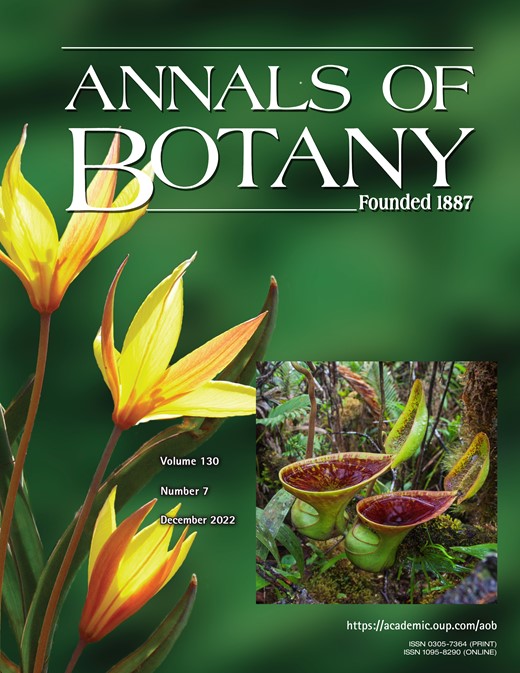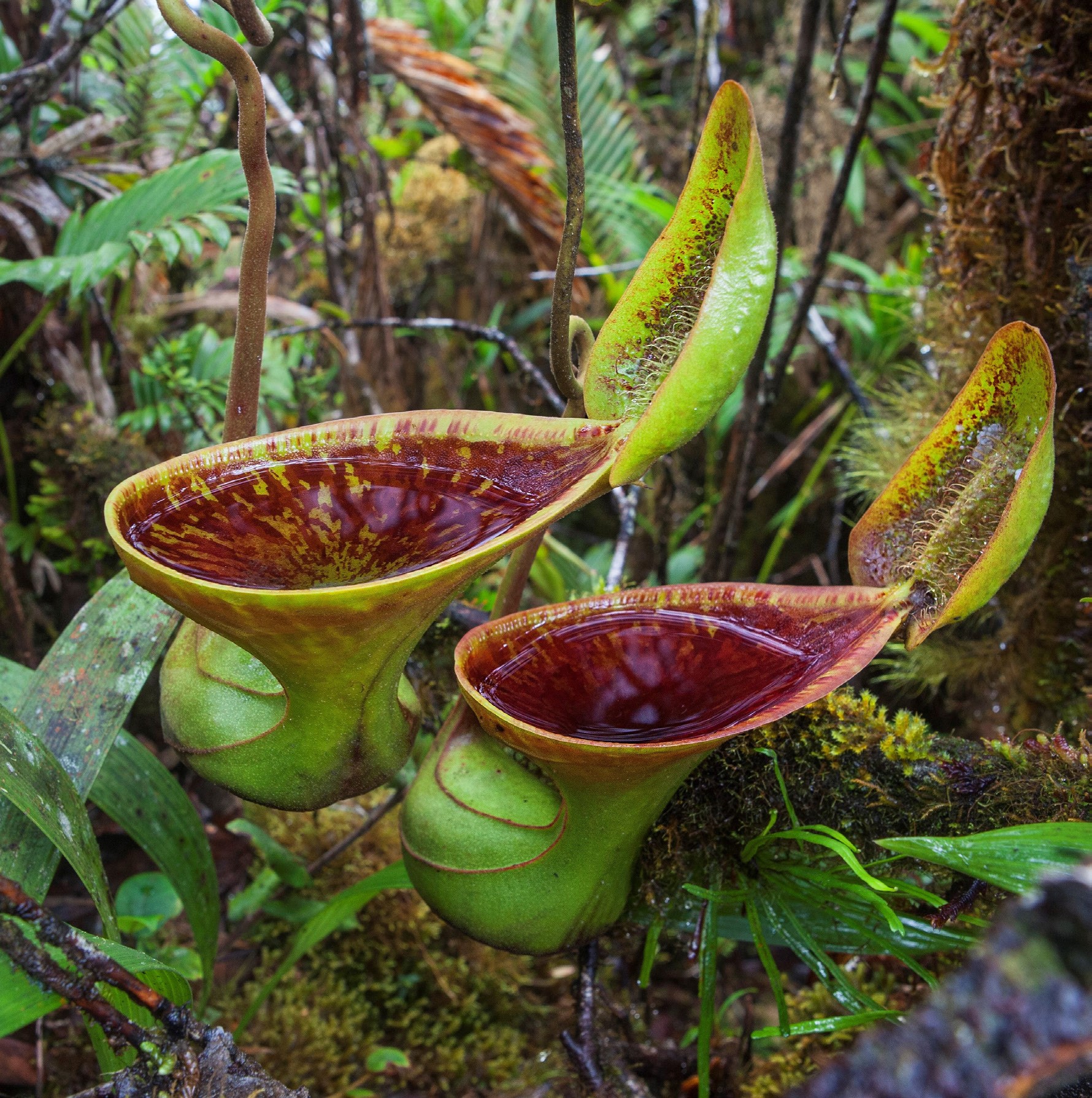
Volume 130, Issue 7
15 December 2022
Cover image

Cover image

The inset cover photo shows the tropical pitcher plant Nepenthes lowii. Endemic to the cloud forests of northern Borneo, this pitcher plant produces epiascidiate leaves evolved for heterotrophic nitrogen gain through the collection of mammalian faeces. The pitcher lid produces a food reward for montane tree shrews (Tupaia montana), which position themselves directly over the pitcher orifice whilst feeding, such that their excreta are neatly captured, providing the plant with 57–100 % of its nitrogen needs. [See Cross et al., 927–938.]
ISSN 0305-7364
EISSN 1095-8290
Issue navigation
Volume 130, Issue 7, 15 December 2022
Commentary
Above- and below-ground trait responses to environmental variation: the need to distinguish inter- and intraspecific variability. A commentary on ‘Above and below-ground plant traits are not consistent in response to drought and competition treatments’
Monique Weemstra and Oscar J Valverde-Barrantes
Annals of Botany, Volume 130, Issue 7, 15 December 2022, Pages i–iii, https://doi.org/10.1093/aob/mcac135
Research in Context
Capture of mammal excreta by Nepenthes is an effective heterotrophic nutrition strategy
Adam T Cross and others
Annals of Botany, Volume 130, Issue 7, 15 December 2022, Pages 927–938, https://doi.org/10.1093/aob/mcac134
Original Articles
Above- and below-ground plant traits are not consistent in response to drought and competition treatments
Mengesha Asefa and others
Annals of Botany, Volume 130, Issue 7, 15 December 2022, Pages 939–950, https://doi.org/10.1093/aob/mcac108
Phylotranscriptomics of liverworts: revisiting the backbone phylogeny and ancestral gene duplications
Shanshan Dong and others
Annals of Botany, Volume 130, Issue 7, 15 December 2022, Pages 951–964, https://doi.org/10.1093/aob/mcac113
Detecting signals of adaptive evolution in grape plastomes with a focus on the Cretaceous–Palaeogene (K/Pg) transition
Giovanni Zecca and others
Annals of Botany, Volume 130, Issue 7, 15 December 2022, Pages 965–980, https://doi.org/10.1093/aob/mcac128
Plant clonality in a soil-impoverished open ecosystem: insights from southwest Australian shrublands
James L Tsakalos and others
Annals of Botany, Volume 130, Issue 7, 15 December 2022, Pages 981–990, https://doi.org/10.1093/aob/mcac131
3-D reconstruction of rice leaf tissue for proper estimation of surface area of mesophyll cells and chloroplasts facing intercellular airspaces from 2-D section images
Rachana Ouk and others
Annals of Botany, Volume 130, Issue 7, 15 December 2022, Pages 991–998, https://doi.org/10.1093/aob/mcac133
Chromosome size matters: genome evolution in the cyperid clade
Tammy L Elliott and others
Annals of Botany, Volume 130, Issue 7, 15 December 2022, Pages 999–1014, https://doi.org/10.1093/aob/mcac136
Interspecific variation in resistance and tolerance to herbicide drift reveals potential consequences for plant community co-flowering interactions and structure at the agro-eco interface
Veronica Iriart and others
Annals of Botany, Volume 130, Issue 7, 15 December 2022, Pages 1015–1028, https://doi.org/10.1093/aob/mcac137
Effects of fruit dimorphism on genetic structure and gene flow in the coastal shrub Scaevola taccada
Naoko Emura and others
Annals of Botany, Volume 130, Issue 7, 15 December 2022, Pages 1029–1040, https://doi.org/10.1093/aob/mcac138
Genetic and epigenetic variation separately contribute to range expansion and local metalliferous habitat adaptation during invasions of Chenopodium ambrosioides into China
Hanchao Zhang and others
Annals of Botany, Volume 130, Issue 7, 15 December 2022, Pages 1041–1056, https://doi.org/10.1093/aob/mcac139
Advertisement
Advertisement


